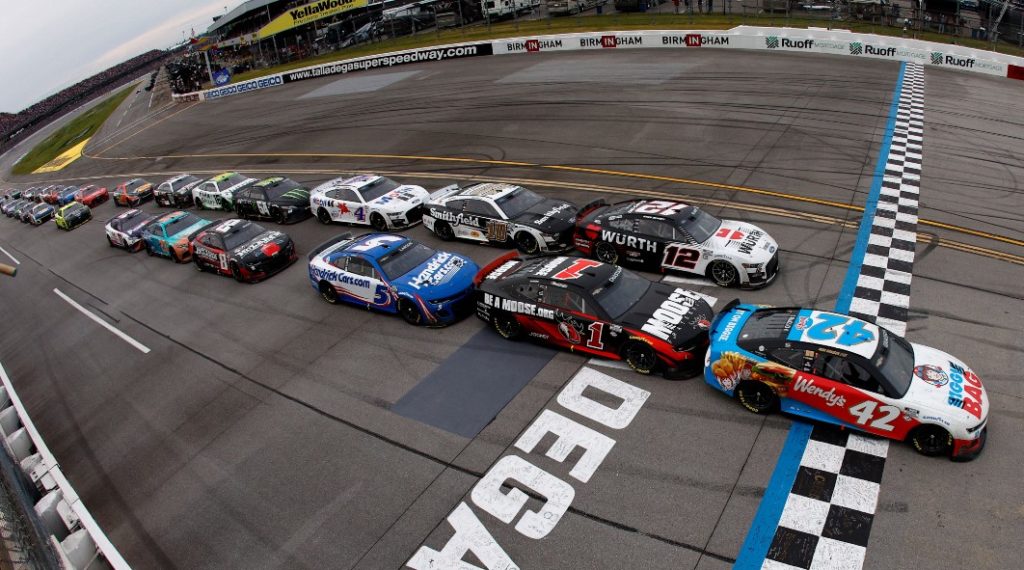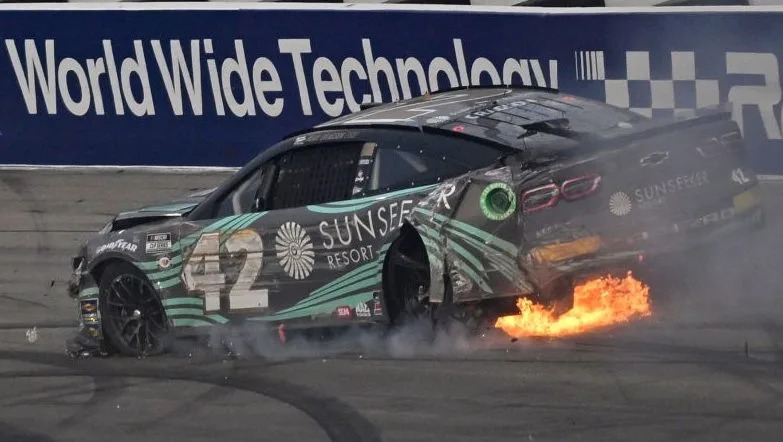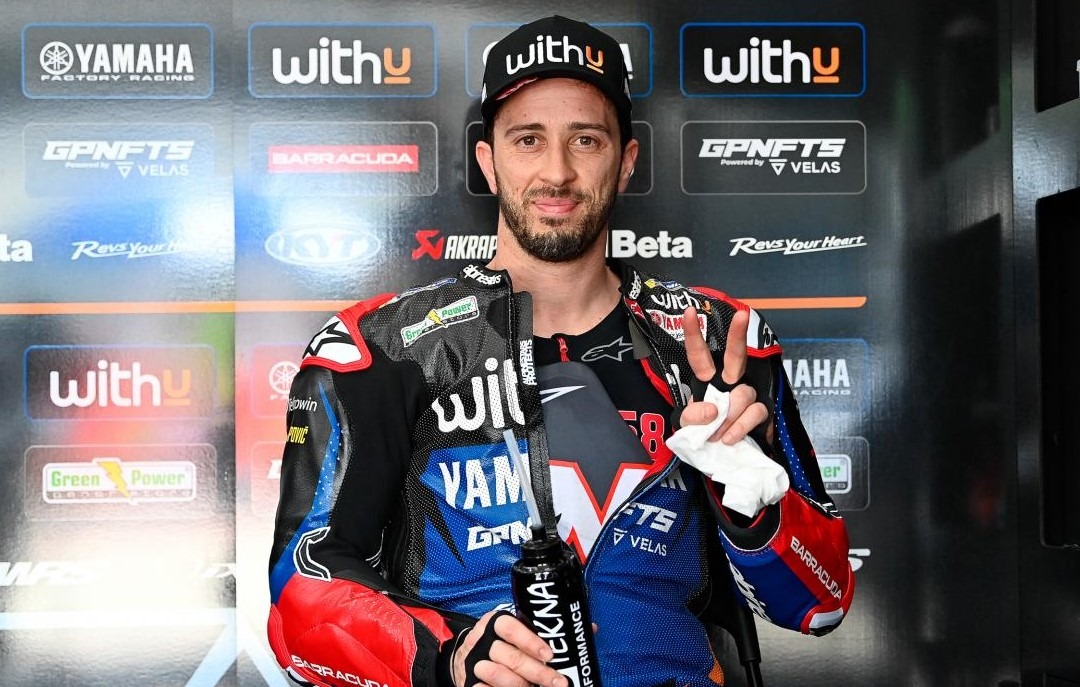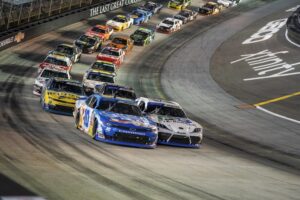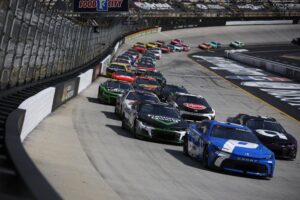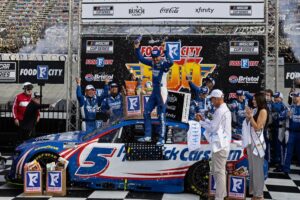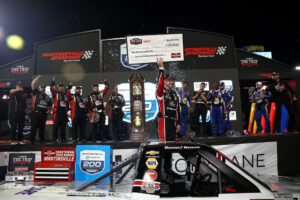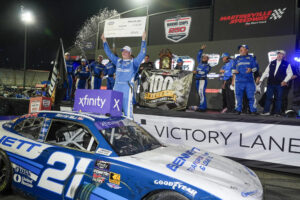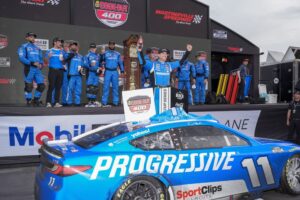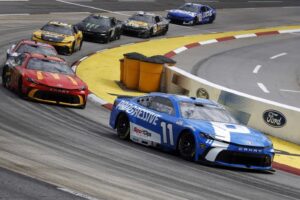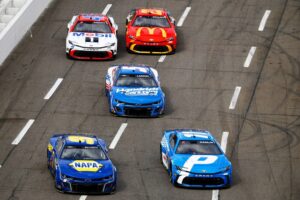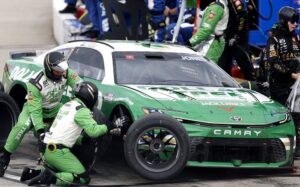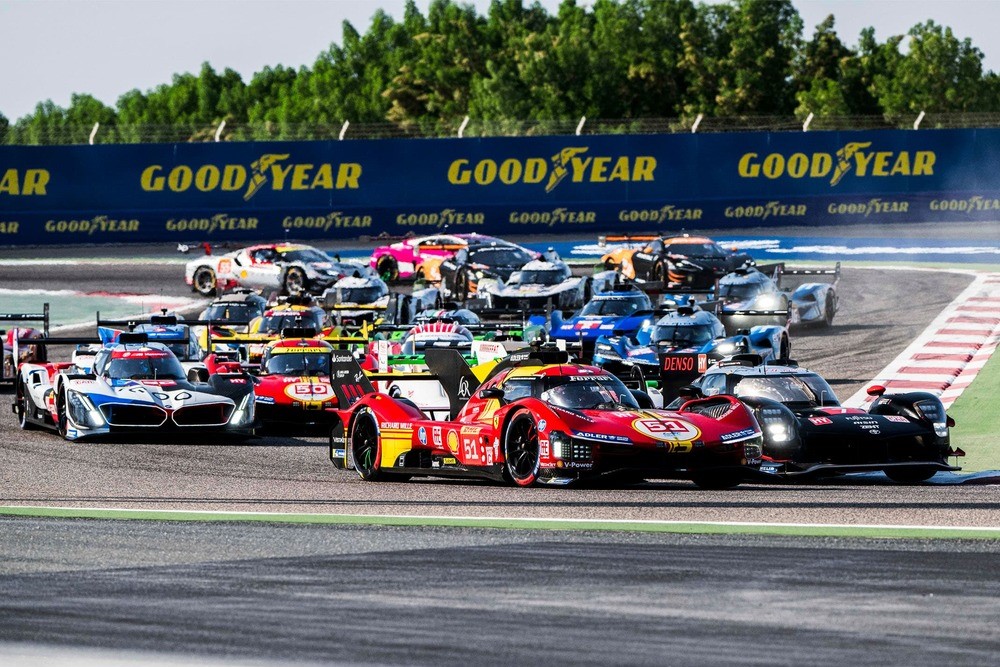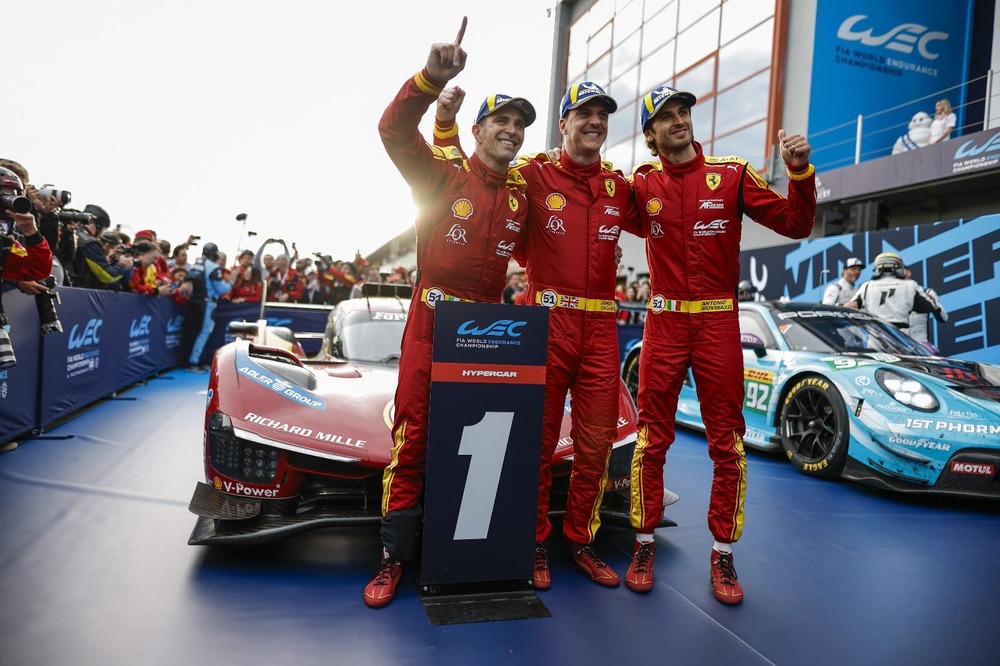NASCAR’s Next Gen Cup Series cars will be subject to significant safety upgrades that have been mandated starting July.
The upgrades come about as a result of NASCAR’s continued collection of on-track data with the car and from an analysis of the severe crash involving Kyle Larson and Ryan Preece in the race at Talladega, Alabama, last month.
The tweaks are focussed on the front and center sections of the cars and will take effect before to the Atlanta Motor Speedway race in July. Teams will receive help from NASCAR in managing the expense of the upgrades.
A new right-side steel door plate, two left-side door brackets used to strengthen durability, and an extra tube in the left-side main cage will be added to the center portion, also known as the driver cockpit.
NASCAR also calls for the softening of the front clip and front struts with the inclusion of upper rail triggers, getting rid of an upper control arm, emptying of the front ballast box, upper frame horns and a new front cross member in addition to the changes to the center section.
A look at the modifications to the Next Gen front-clip components.
— NASCAR (@NASCAR) June 8, 2023
All of these changes come as a result of a thorough examination of the Larson/Preece crash.
“The 5/41 was just a very severe crash on the track and made us take sort of a fresh look at the right side,” said NASCAR’s vice president of safety engineering John Patalak.
“The thing we looked at here was the difference in speed between the two cars… It was almost 60 mph, which is really hard to find on the race track. It’s very rare in our racing that you have cars with a delta of 60 mph.
“So, when you have impacts like that occur, it’s very challenging to both cars.”
After gathering GPS, impact data, and telemetry from the Larson/Preece accident, NASCAR conducted crash tests at the Transportation Research Center in Ohio.
The testing revealed a significant change in the way the side of the NextGen cars handled a comparable hit. According to Patalak, the Next Gen car will be better able to withstand side and frontal hits in the future.
“The car has to do its job. It’s an important role but it’s certainly not largest role,” Patalak said.
“The major, big improvements come from the driver restraint system.
“We are focused on the car and we are making it better but we also have projects running on head-and-neck restraints and helmets and head surround foams and seat inserts and seat mounting.
“We’re still trying to push the envelope forward in all of those areas.”

